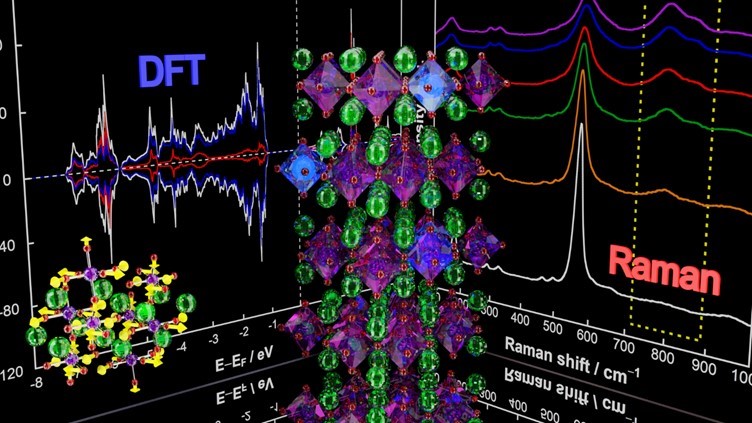RESEARCH NEWS - Decoding the Structure and Properties of Near-Infrared Reflective Pigments
Category:News|Publishing : July 25, 2022
Urban areas without sufficient tree cover are significantly warmer than their surroundings. This "urban heat island" effect mainly results from an absorption of near-infrared (NIR) radiation in sunlight. NIR-reflective pigments that can mitigate such heating effects are, therefore, highly desirable.
In particular, functional inorganic pigments are an attractive candidate on this front. In fact, Dr. Ryohei Oka and his colleague from Nagoya Institute of Technology, Japan, have demonstrated that layered perovskite ceramic compounds of the type A2BO4 are ideal for reflecting NIR. In his previous study, it was discovered that novel perovskites such as titanium-added calcium manganese oxide (Ca2(Mn,Ti)O4) ceramics are much better at reflecting NIR radiation than commercially available black pigments. However, the mechanism by which Ca2(Mn,Ti)O4 achieves this remarkable feat remains unknown.
In a recent study published in Inorganic Chemistry, Dr. Oka and his colleague, Dr. Tomokatsu Hayakawa, analyzed the structure and composition of Ca2(Mn,Ti)O4 using a combination of standard theoretical and experimental techniques to investigate the factors contributing to its enhanced NIR reflectivity. This paper was made available online on April 19, 2022, and published in Volume 61 Issue 17 of the journal on May 2, 2022.
In their work, the duo employed X-Ray diffraction (XRD) and Raman spectroscopy in combination with a computational method called "density functional theory" (DFT) to successfully extract missing details about the crystal structure and electronic states of Ca2(Mn,Ti)O4. "Few studies so far have conducted Raman spectroscopy of Ca2(Mn,Ti)O4. Furthermore, they have not provided any detail of its vibrational modes. However, information about its electronic states and vibrational modes is crucial to understand how these perovskites turn out to be such great NIR reflectors," says Dr. Oka, explaining the motivation behind their approach.
The duo analyzed the crystal structure of calcium manganese oxide (Ca2MnO4) and tracked the structural changes that occurred with the addition of Ti impurities. Furthermore, they identified how the chemical bonds within the perovskite are modified upon introducing Ti impurities. They found that, compared to Ca2MnO4, Ca2(Mn,Ti)O4 exhibited an additional Raman peak that was likely due to the activation of a "silent mode" caused by the Ti impurities. However, the XRD patterns of Ca2MnO4 and Ca2(Mn,Ti)O4 were identical. The duo attributed this to Ti-Ti correlation at a certain distance.
Another highlight of their study was the striking agreement between computational results from DFT and experimental data. The energy gaps obtained from the three models for Ca2(Mn,Ti)O4 used by the duo in their calculations agreed with each other as well as the experimental value. Moreover, the result was independent of Ti-substitution or its position in the crystal. Additionally, the calculations revealed that the enhanced NIR reflectivity upon adding Ti ions resulted from a lowering of "density of states" (the number of electronic states per unit volume per unit energy) near the Fermi level (the highest energy level an electron can occupy at absolute zero temperature).
These findings take us a step closer towards unveiling the thermal shielding property of perovskite ceramics. The perfect combination of experimental and theoretical approaches developed in this study provides a general recipe for understanding the structure and properties of not only A2BO4 type ceramics but a range of complex perovskite ceramics. As Dr. Oka puts it, "This combinational approach is applicable to a wide range of functionalized crystalline ceramics to understand their optical, electronic, and magnetic properties in a much better way with more reliable structural models obtained computationally."
Indeed, the detailed understanding of the enhanced NIR reflection mechanism would be extremely beneficial as inorganic pigments find more application as superior thermal coatings for urban buildings.

Structure and electronic state analyses of layered perovskites using a combined experimental and theoretical approach.
In a new study, researchers from Nagoya Institute of Technology, Japan use a combination of experimental and theoretical approaches to understand the optical, electronic, and magnetic properties of complex solids of layered perovskite compounds, providing valuable insights. The approach is extendable to a wide range of functionalized crystalline ceramic compounds.
Image credit: Ryohei Oka from Nagoya Institute of Technology, Japan
Reference
|
Title of original paper |
Raman Spectroscopic Investigation and Electronic State Calculation for Ca2(Mn,Ti)O4 Black Pigments with High Near-Infrared (NIR) Reflectivity |
|
Journal |
Inorganic Chemistry |
|
DOI |
About Assistant Professor Ryohei Oka
Dr. Ryohei Oka is an Assistant Professor in the Department of Life Science and Applied Chemistry at Nagoya Institute of Technology, Japan. Dr. Oka has authored several high impact publications and conference presentations in color science and optics. His expertise lies in techniques such as synthesis, UV-Vis spectroscopy, X-ray diffraction analysis, and Raman spectroscopy. He has won several awards, including Japan Ceramics Association Excellence Presentation Award, presented by Japan Ceramics Association, Rare Earth Debate Student Lecture Award, presented by Japan Rare Earth Society and Coloring Materials Research Presentation Excellent Lecture Award by The Color Materials Association of Japan.
Contact
Assistant Professor Ryohei Oka
Email: oka.ryohei[at]nitech.ac.jp
TEL : +81-52-735-5365
Links : Details of a Researcher - OKA Ryohei
*Please replace [at] with @ when contacting .
Nagoya Institute of Technology and Toyota Industries Corporation launch joint research on smart plants and warehouses Shirai Laboratory's research paper was selected as the "Back Cover" and "Cover Profile" of Green Chemistry

 Japanese
Japanese